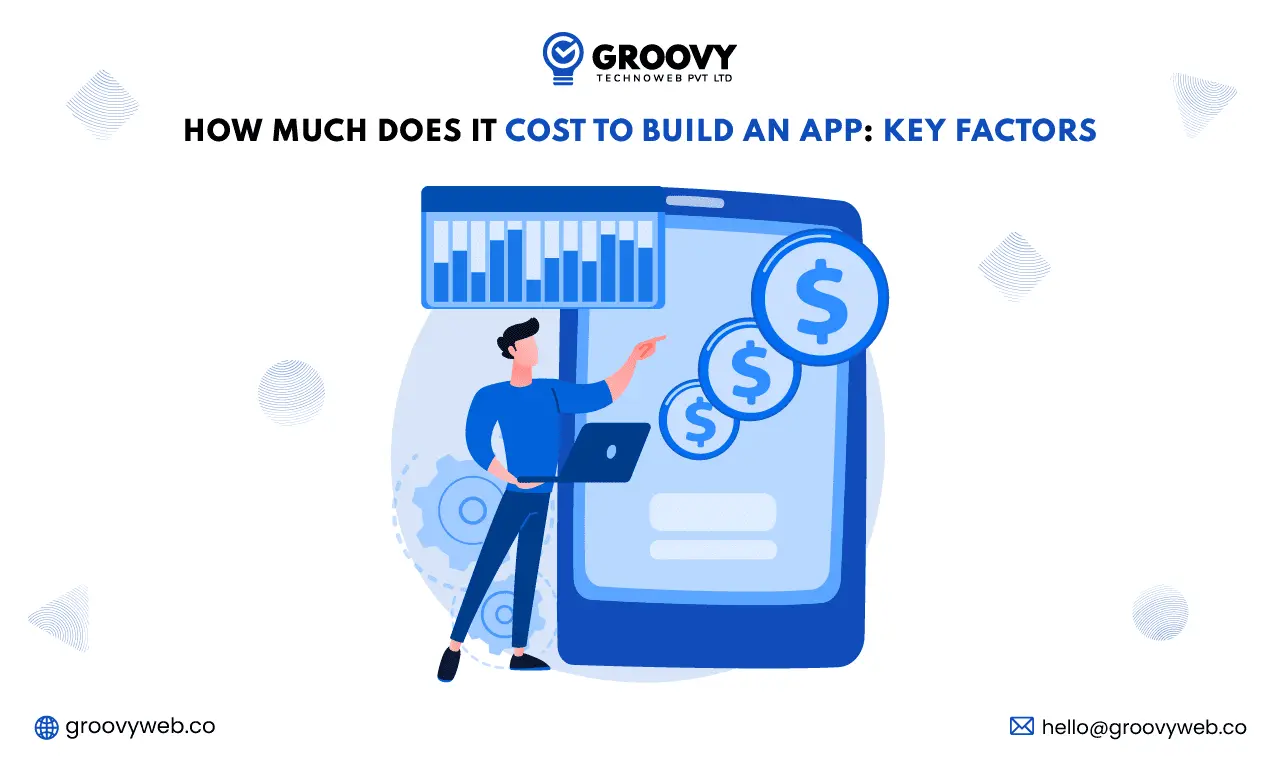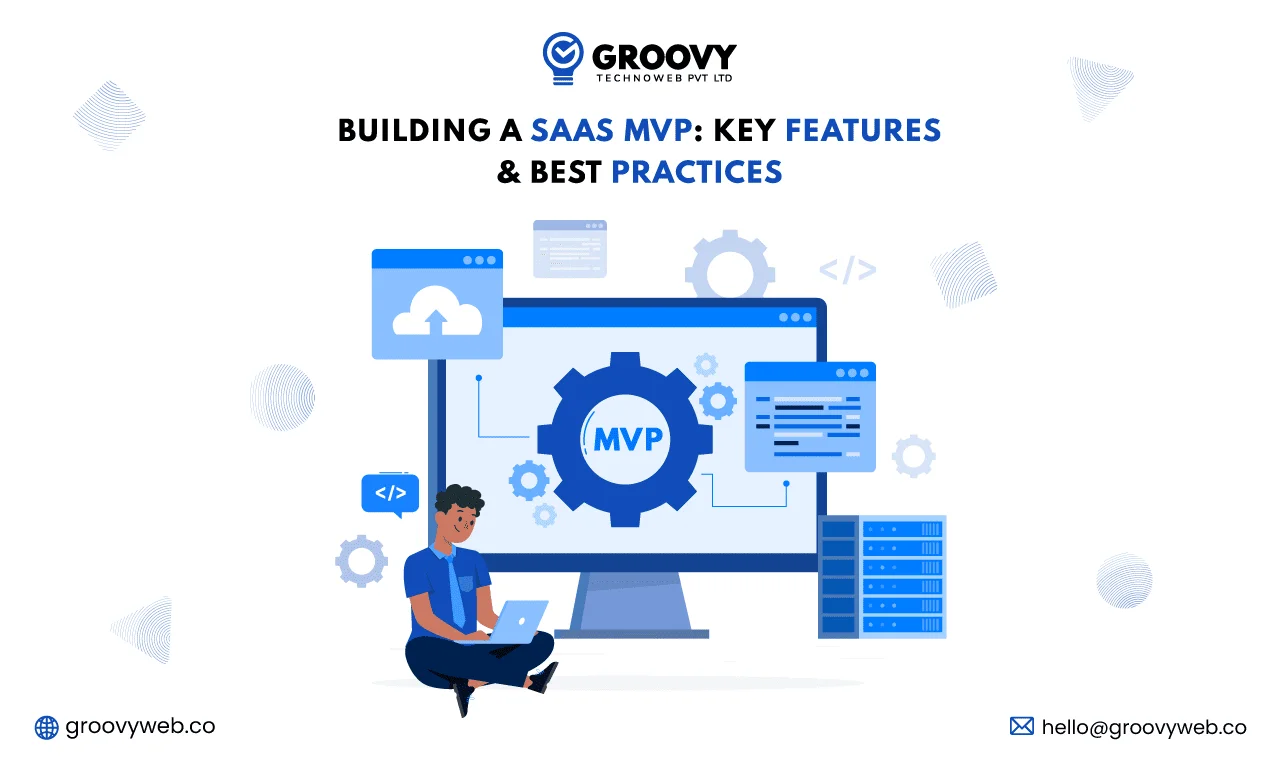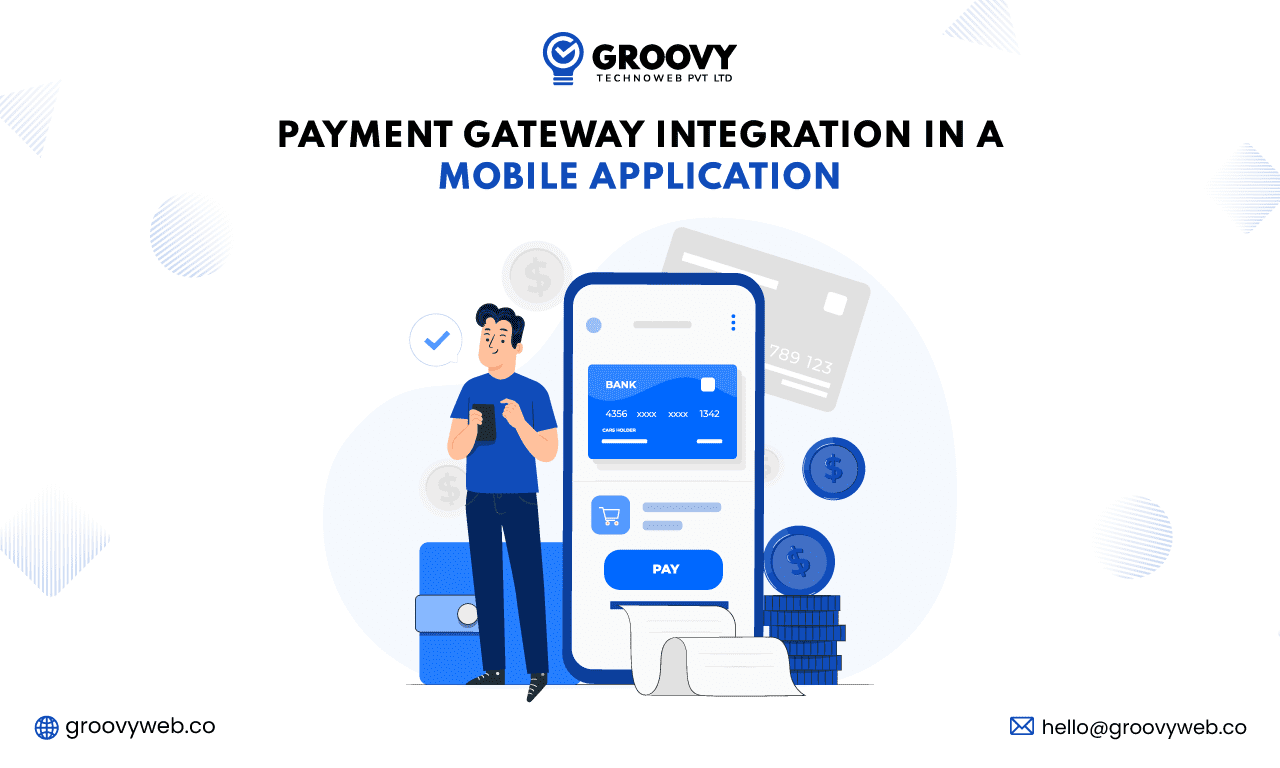How Much Does It Cost to Build an App: Key Factors
Rahul Motwani
January 09, 2025 107 Views
Quick Summary : This article is a complete breakdown on ‘How Much Does it Cost to Build an App,’ discussing key aspects such as the type of app, platform, functionality, and the experience of the development team. It includes pre-development, development, testing, and maintenance expenses, as well as how to save, for example, developing MVP and using cross-platform frameworks. Working with a mobile app development company helps to avoid manifold issues, while outsourcing to cost-effective countries or using open-source tools can help control the costs effectively. The conclusion also underlines the need to focus on crucial functions, developing applications for multiple platforms, and hiring experienced teams to develop effective and affordable apps.
In today’s digital world, mobile apps have become essential tools for businesses and individuals alike. From streamlining operations to enhancing customer experiences, apps are at the core of digital transformation. With millions of apps available on platforms like Google Play and Apple’s App Store, the demand for customized solutions continues to grow. However, one of the most pressing questions businesses ask is: How much does it cost to build an app?
Mobile applications have become the cornerstone of interaction in today’s digital society for both businesses and end-users. The most critical driver of digital transformation is apps – be these used for simplifying processes internally or improving customer interactions. As there are millions of apps available across both Google Play and Apple’s App Store, the interest in customized solutions remains high. However, one of the most pressing questions businesses ask is: How much does it cost to build an app?
The cost of developing an app can range from a few hundred dollars to tens of thousands of dollars depending on the features, the platform, and the developers. Outsourcing a mobile app development company ensures your app meets the market needs and your business objectives. Many companies have a specialization in this field and offer services based on their feasibility to the needs of the clients.
If you have been asking yourself how much it costs to hire someone to build an app then the cost will depend on the team’s location, experience, and project requirements. It only means that when you know these variables you will be in a position to make the right decisions and even be in a position to divide resources as required. The following factors are broken down in this article to ensure that you master the app development budget and planning process easily.
Factors Affecting the Cost of Building an App
1. Type of App
The complexity of the app greatly influences the cost of building an app. Apps can be classified into three categories:
- Simple Apps: The simplest applications like calculators or task managers, as a rule, are cheaper as it does not take a long time to develop them. These apps are typically simple, with no backend demands, meaning the development costs are low.
- Medium-Complexity Apps: Custom accessories such as e-commerce platforms or social media applications, for instance, demand more resources thus hiking the bill. Such applications may require users’ identification, money transactions, and data storage.
- Complex Apps: From social and gaming applications, and IoT app development to apps that are based on artificial intelligence or augmented and virtual reality, the use is based on a certain level of technologies and skills, and thus the costs are higher. Often, these apps need real-time performance that can involve 3D rendering or smooth API integration.
2. Platforms: Native vs. Cross-Platform
The type of platform has significant implications on cost outcomes.
- Native Apps: These are applications intended for iOS or Android and are optimized for these systems, but cost more in comparison with the above-mentioned. Native development is effective for performance and takes advantage of as many features on the device as possible.
- Cross-Platform Apps: Using frameworks like React Native or Flutter, they can achieve cost and time efficiency as they code in several platforms at a go. These are the most suitable for companies that want to have their app on both platforms iOS and Android without doubling the development costs.
3. Features and Functionalities
Additional options, including user authentication, payment systems, push notifications, and third-party APIs, can increase the cost of developing an app with machine learning algorithms, chatbots, or IoT functionalities adding extra time and effort.
- Basic Features: Authentication, user’s account, and basic UI.
- Advanced Features: Instant messaging, including location-based service and video sharing.
- Custom Features: Implementation of blockchain or AI/ML features for specific capabilities.
4. Design Complexity
The complexity of the UI/UX design of the application also dictates the cost of the overall app.
- Standard Design: Business-cut designs are inexpensive and focus on functionality.
- Custom Design: Unique and interactive designs are more complex and incur higher costs. An effective and efficient design of an App helps to increase users’ interactivity and, thus, it can become a winning strategy in the highly saturated markets.
5. Development Team
The type and location of the development team can significantly affect the costs:
- Freelancers: Cost-effective but the device may not be capable of handling very large projects. Freelancers are suitable for start-ups or small-scale projects.
- Mobile App Development Companies: Pricing can be higher but the benefit is the reliability, expertise, and scalability of the service. Some of these companies offer integrated solutions to guarantee that the development process and deployment are smooth.
- In-House Teams: Well-suited for sustained initiatives though costly in terms of salary, resources, and equipment in the initial stage.
6. App Maintenance and Updates
It is for this reason that development does not stop right at the point the creation of an application or software is complete. Maintenance is needed for updating the app, fixing the bugs, and server maintenance to ensure the app is up and running. These are expenses that will recur from time to time hence they should be included in the overall budget.
- Bug Fixes: Responding to problems stated by them.
- Feature Updates: Introducing new features to meet market needs and stay relevant.
- Server Maintenance: Reliability and growth capability.
Consulting with a professional mobile application development company or IoT application development company can be useful in avoiding these pitfalls and maintaining the effectiveness of the application in the future. Building a custom web app that remains effective, not only requires basic maintenance but also needs newer updates to be incorporated, whether it be for appearance or functionality; and selecting a compatible company to do so is crucial
Breakdown of the Cost to Develop an App
1. Pre-Development Costs
Before coding begins, costs are incurred for:
- Market Research: Target clients and competition analysis. This step makes it easier to ensure that the developed MP is responsive to the market’s needs. Such research ensures that companies know their niche and any opportunities that could be exploited in the market.
- Wireframing and Prototyping: Creating the app’s blueprint. These guides help give a clear definition of the app’s layout and usability, thereby minimizing the occurrence of mistakes by the developers. UI and UX design tools such as Figma or Adobe XD are usually applied during this stage.
2. Development Costs
This stage includes:
- Front-End Development: Building the app interface. They include the conceptualization of an easy-to-navigate and appealing website design.
- Back-End Development: A secure and scalable server base for hosting the frequently accessed computer code databases. This makes sure that all the logic and functionalities of the app are as required to be expected. Having strong back-end systems is important for apps that provide frequent updates of data.
3. Testing and Quality Assurance (QA)
Thorough testing allows the development of an application that does not contain critical bugs or usability issues, and it takes more time and money. This includes:
- Manual Testing: Testing some functions of the models in similar scenarios. Specifically, testers ensure the website meets requirements for usability, performance, and responsiveness on all devices.
- Automated Testing: Using tools to assess the applicability of repeating operations or processes. Automation has become a way of fast-tracking the testing for large-scale applications.
4. Post-Development and Maintenance
Updates and scaling are also required after deployment, especially if the application has a large number of users. Common costs associated with maintenance include hosting and server monitoring, and periodic changes to reflect changes in the operating system.
- Ongoing Bug Fixes: Solving problems as they emerge.
- Performance Optimization: Improving the speed of the app and the time it takes to perform certain tasks.
- Compatibility Updates: Stability checks of new versions released by the OS platform.
An experienced and professional mobile app development company that specializes in custom software and applications should be able to assist with this. When posing your question, how much does it cost to hire someone to build an app, remember that the cost of maintaining apps, and updates and keeping them current are as important as the initial costs.
Average Cost to Build an App
The cost to build an app varies widely based on its complexity and region:
- Simple Apps: $5,000 to $20,000.
- Medium-Complexity Apps: $20,000 to $50,000.
- Complex Apps: $50,000 to $300,000 or more.
Statista reported that the mobile app market is expected to be $935 billion by the year 2025 due to the increased demand for quality mobile applications.
Regional Cost Variations
- North America: $100-$250/hour.
- Europe: $50-$150/hour.
- Asia: $20-$50/hour.
These variations demonstrate one must select the proper development team to suit the needs and budget of the project. When it comes to the mobile application development process, it is recommended to work with a reliable mobile application development company or a specialist in custom software and application development to achieve the best results.
When considering the question ‘How much does it cost to hire someone to build an app’ there are many factors that need consideration including the complexity of the project, the geographical location, and the expertise of the team. Such comprehension of these elements helps make pertinent decisions and fine-tune the development plans.
Cost-Saving Tips
1. Build an MVP (Minimum Viable Product)
Minimize initial development costs and prove the concept by targeting only the most required functionality. An MVP can help businesses capture user feedback and make data-driven decisions for better updates in the future. This approach is particularly appropriate for start-ups in that it allows them to pilot new ideas before the main launch.
2. Choose Cross-Platform Development
Use frameworks like Flutter or React Native to cut the time and costs of app development. These frameworks enable developers to write a single codebase that can be used on different operating systems. This approach is especially helpful for mobile applications that are used by both iOS and Android consumers and for controlling expenses.
3. Outsource to Cost-Effective Regions
India and Eastern Europe are popular choices at the moment because those regions provide lower-price talent that is perfect for custom software and app development. This means that working with a development team in these regions guarantees quality work without having to spend more. This is particularly beneficial for companies seeking to establish IoT app development companies.
4. Use Open-Source Tools
Use pre-built components or frameworks to reduce the number of hours taken in development. You get very solid solutions with open-source tools, there is no need to develop a custom solution. This is beneficial because it lowers the overall cost of building an app while maintaining the quality and use of the app. Most mobile application development companies find it essential to use open-source frameworks to bring down the costs involved.
If you are still struggling with the question of how much it costs to hire someone to build an app, then these tips would help cut down the cost. Employing these strategies will keep the quality and the expenditure in check and will also make your app development process more effective and successful.
Why Partner with a Mobile App Development Company?
Migrating an effective strategy for ideation and design to execution by partnering with an experienced mobile app development company leads to a smooth process. They provide skill, experience, and access to tools and manpower, which makes them a preferred choice for all those seeking sound app development. These sorts of companies are familiar with handling UI/UX design, which is crucial for the success of an application and its ease of use.
Furthermore, IoT app development companies are also focused on using the latest IoT technologies in app development which makes them suitable to work with businesses interested in futuristic solutions. For instance, IoT apps can revolutionize industries such as healthcare, logistics, and smart home automation, which lead to potential business developments.
How Much Does It Cost to Hire Someone to Build an App?
Hiring costs depend on the expertise and location of the developer or team:
- Freelancers: $15-$100/hour.
- Mobile App Development Companies: $50-$250/hour.
- In-House Developers: A minimum of $60,000 up to $150,000 per annum.
Outsourcing with a reputable firm makes it possible to achieve the best outcome for the project and at the same time meet the cost aspect. When selecting a developer, attention should be given to their samples, feedback from previous clients, and experience. Involving a professional team makes it possible to design the right UX/UI that meets the users’ expectations and the cost factor.
Using these components, one can conclude the cost to build an App and attain the desired results. Engaging professional developers helps to avoid complications and deliver an app that meets the market’s expectations.
Conclusion
Realizing the cost of building an app is important, especially for commercial enterprises that hope to succeed in a technology-driven world. Several factors contribute to the totality of the app budget – from the type and features of the app to the platform and the development team.
When it comes to business processes, focusing on priorities can save critical amounts of money and avoid wasting it on less important features. Cross-platform development is another good approach because it lowers both the time and cost of development. Working with experienced personnel is vital as it guarantees the achievement of set goals of developing products with quality and within the required time.
The first step towards creating your app is to seek the services of a reliable mobile app development company. They can suggest solutions starting with the planning and design stages, as well as support you during the deployment and further maintenance. They also help in coming across areas of optimal cost combined with the fact that the app will have to meet specific market standards.
Do not forget that the success of your app also depends on hiring the right people and leveraging the right technologies to grow your business and become a leader in your field. Whether you are creating an application that serves a specific purpose or entering into partnerships with IoT app development companies, knowledge is power.
Written by: Rahul Motwani
Rahul Motwani is an experienced Project Manager with a demonstrated history of working in the information technology and services industry. He started his career as a Backend developer and currently has his hands-on managing projects at Groovy Web. He is a strong program and project management professional with a Bachelor's degree focused on Computer Application.
Frequently Asked Questions
We hope these clear your doubts, but if you still have any questions, then feel free to write us on hello@groovyweb.co2. What are the factors to consider when estimating and redesigning the cost to develop an app?
The factors that define the cost include the type of application, whether native or cross-platform, the features to be incorporated, the complexity of designing, and the competence of the development team. Applications with enhanced attributes such as AI or IoT are bound to consume more resources in the systems, hence increasing the costs.
How much will it cost to hire someone to build an app?
Hiring costs vary: freelancers cost $15- $ 100 per hour and development companies cost $50-$250 per hour while in-house developers receive $60, 000-$ 150, 000 per year. Both products are reasonable to use, and the choice depends on the project’s size and cost limit.
What are the advantages of working with a mobile app development company?
Development companies provide outsourcing services, qualified staff, and a set of essential tools. They focus on specific niches, for example, UI/UX design to deliver beautiful and functional apps that will meet the needs of users and the company.
What steps can be taken to reduce the app development cost for businesses?
Companies can cut back expenses by creating an MVP, using cross-platform frameworks like Flutter, hiring remote teams, and utilizing open-source solutions. These strategies prove useful in minimizing development time and costs, all without having to sacrifice the quality of the final output.
Related Blog

Nauman Pathan
Building a SaaS MVP: Key Features & Best Practices
Software Development 11 Mar 2025 15 min read
Krunal Panchal
How to Integrate Payment Gateway in Mobile Application
Mobile App Development 19 Dec 2024 11 min read
Rahul Motwani
How is Fintech Changing the Banking and Financial Industry?
Fintech 25 Mar 2025 9 min readSign up for the free Newsletter
For exclusive strategies not found on the blog